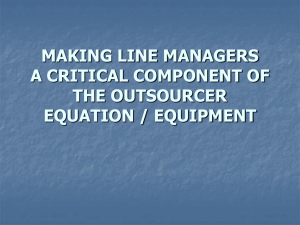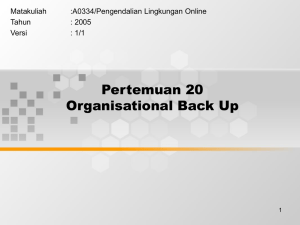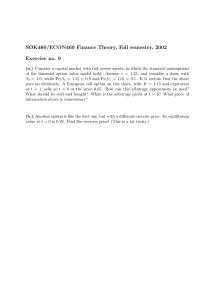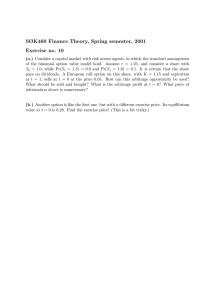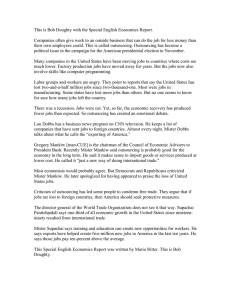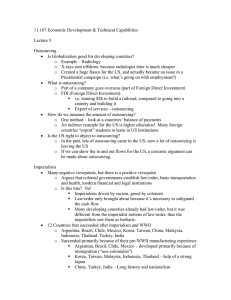CLASS 5: CROSS-BORDER ARBITRAGE AND OUTSOURCING LEARNING OBJECTIVES:
advertisement
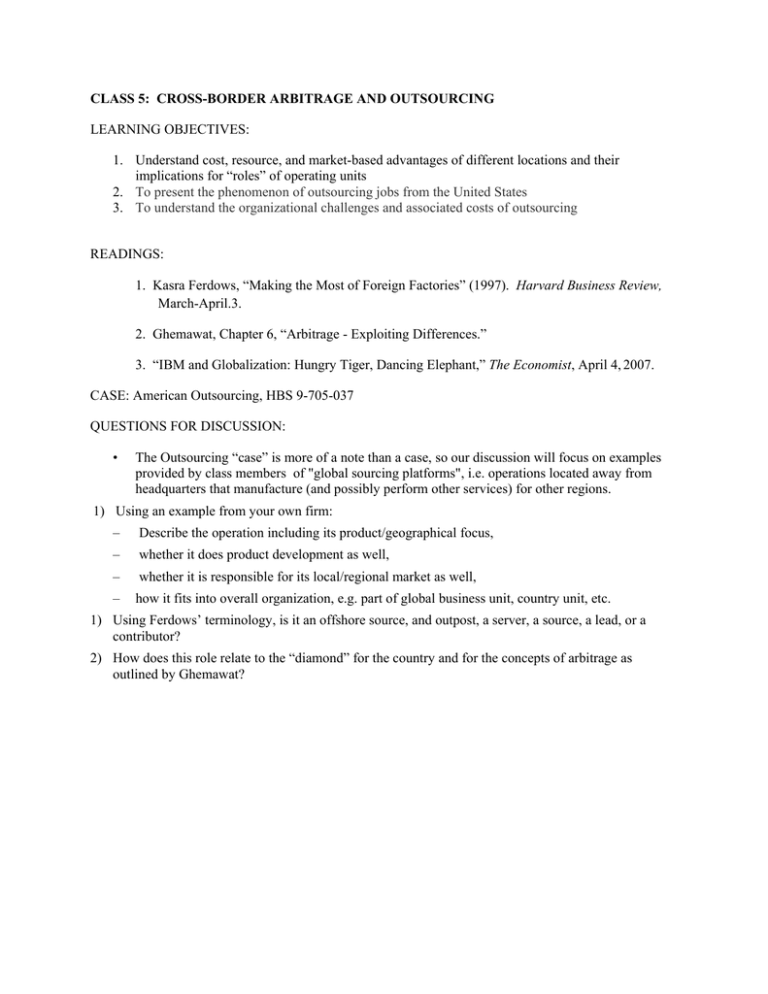
CLASS 5: CROSS-BORDER ARBITRAGE AND OUTSOURCING LEARNING OBJECTIVES: 1. Understand cost, resource, and market-based advantages of different locations and their implications for “roles” of operating units 2. To present the phenomenon of outsourcing jobs from the United States 3. To understand the organizational challenges and associated costs of outsourcing READINGS: 1. Kasra Ferdows, “Making the Most of Foreign Factories” (1997). Harvard Business Review, March-April.3. 2. Ghemawat, Chapter 6, “Arbitrage - Exploiting Differences.” 3. “IBM and Globalization: Hungry Tiger, Dancing Elephant,” The Economist, April 4, 2007. CASE: American Outsourcing, HBS 9-705-037 QUESTIONS FOR DISCUSSION: • The Outsourcing “case” is more of a note than a case, so our discussion will focus on examples provided by class members of "global sourcing platforms", i.e. operations located away from headquarters that manufacture (and possibly perform other services) for other regions. 1) Using an example from your own firm: – Describe the operation including its product/geographical focus, – whether it does product development as well, – whether it is responsible for its local/regional market as well, – how it fits into overall organization, e.g. part of global business unit, country unit, etc. 1) Using Ferdows’ terminology, is it an offshore source, and outpost, a server, a source, a lead, or a contributor? 2) How does this role relate to the “diamond” for the country and for the concepts of arbitrage as outlined by Ghemawat?


